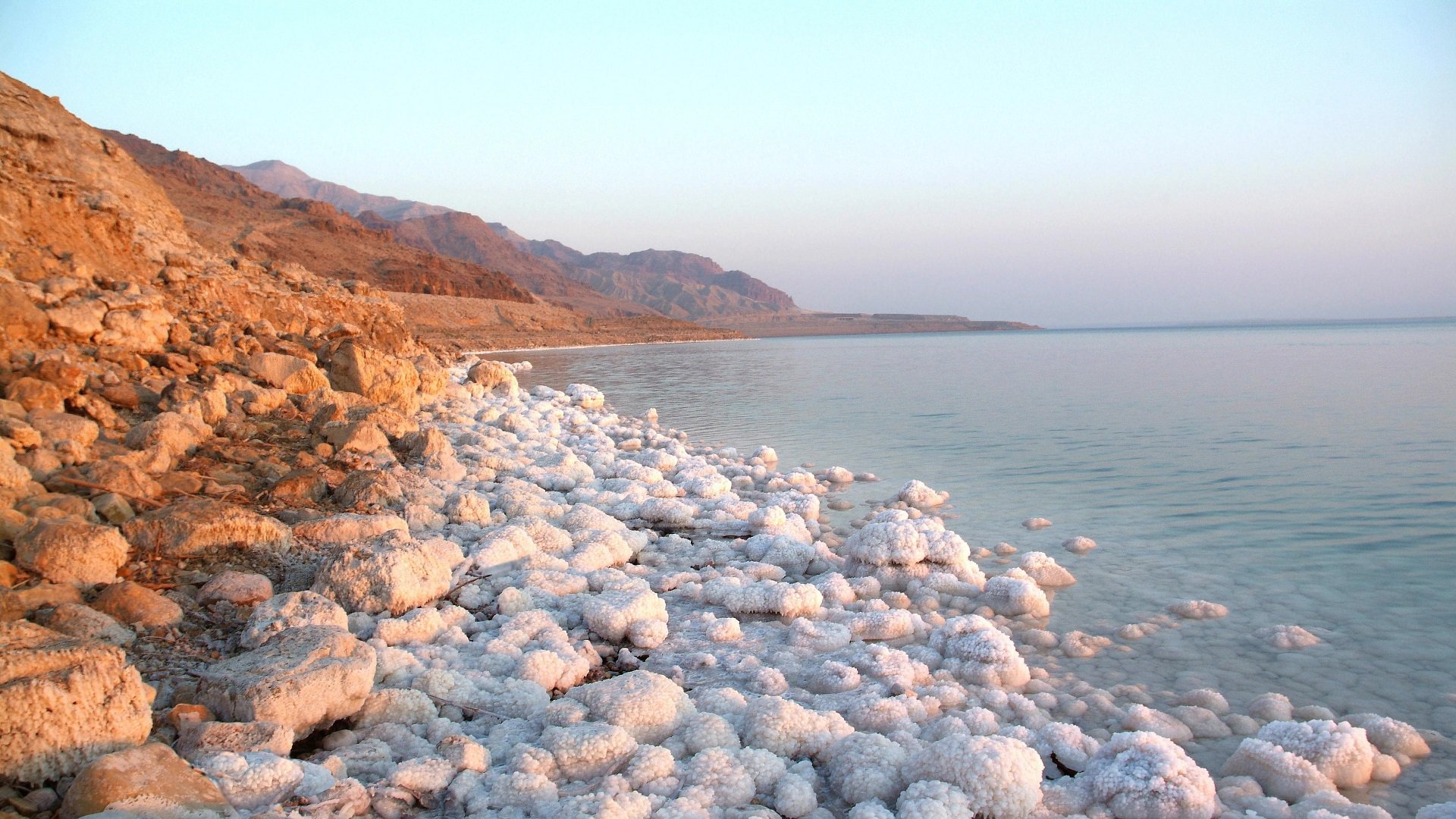Haloferax volcanii occurs in the salt water of the Dead Sea. This archaea is a halophile: it grows in environments with a very high salt concentration.
Haloferax volcanii occurs in the salt water of the Dead Sea. This archaea is a halophile: it grows in environments with a very high salt concentration.
Carotene sunscreen
The Dead Sea owes its name to the high salt concentration that makes life impossible for organisms such as fish and aquatic plants. The salt concentration is around 34%, ten times higher than in the ocean. Until 1936 it was thought that there was no life at all, until microbiologist Benjamin Volcani discovered that the Dead Sea actually does contain life, like this archaea.
In addition to protecting against UV radiation, the pigments of H. volcanii also protect against other forms of stress, such as high doses of UV radiation or changing salt concentrations. H. volcanii colours bright orange to red. If it rains heavily over the Dead Sea, and the salt concentration decreases sharply, the archaea can be noticed by a totally red sea.
Earthlings on mars?
Many archaea species have been discovered in extreme environments. High pressure, low pH, almost boiling water: so-called extremophiles grow there easily. Astrobiologists are investigating, among other things, whether life is possible elsewhere than on Earth. The planet Mars has very salty, dry conditions with a high dose of UV radiation. In addition, there is practically no oxygen in the atmosphere of Mars, it consists of 96% carbon dioxide. These conditions are a piece of cake for Haloferax volcanii.
Cultivating extreme life
Cultivating these microbes seems simple. After all, they grow even in very extreme conditions. But nothing could be further from the truth. On the contrary, their specific requirements make them difficult to cultivate in a laboratory, because you have to mimic the natural habitat of the microbes. And that is easier said than done with many extremophiles.
The habitat of H. volcanii is still relatively easy to reproduce. Microbes are grown in a so-called medium full of nutrients, to which the lab technicians in Micropia simply add a lot of salt for H. volcanii. The Dead Sea is also a lot warmer, and the water is constantly in motion. This too needs to be simulated. So in Micropia's lab, the cultures are placed on a so-called shaker at 26 degrees Celsius.

